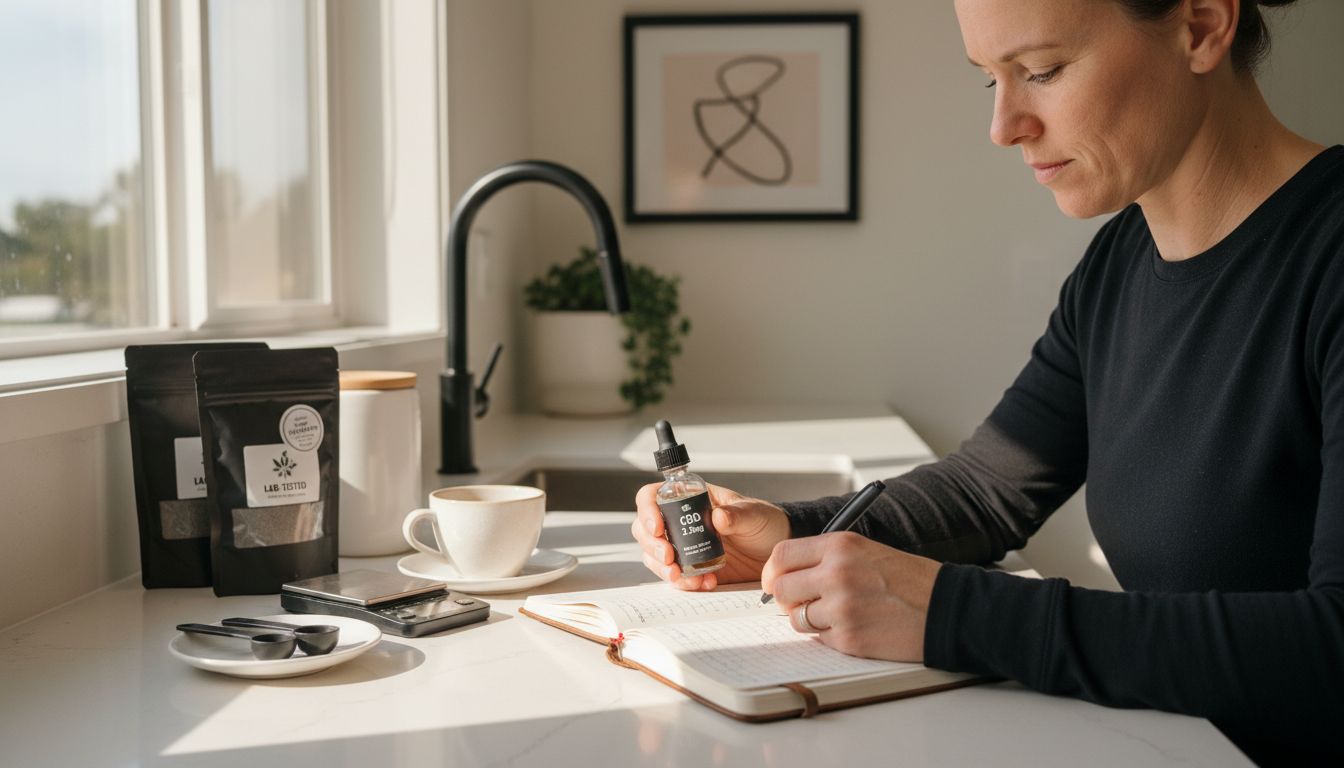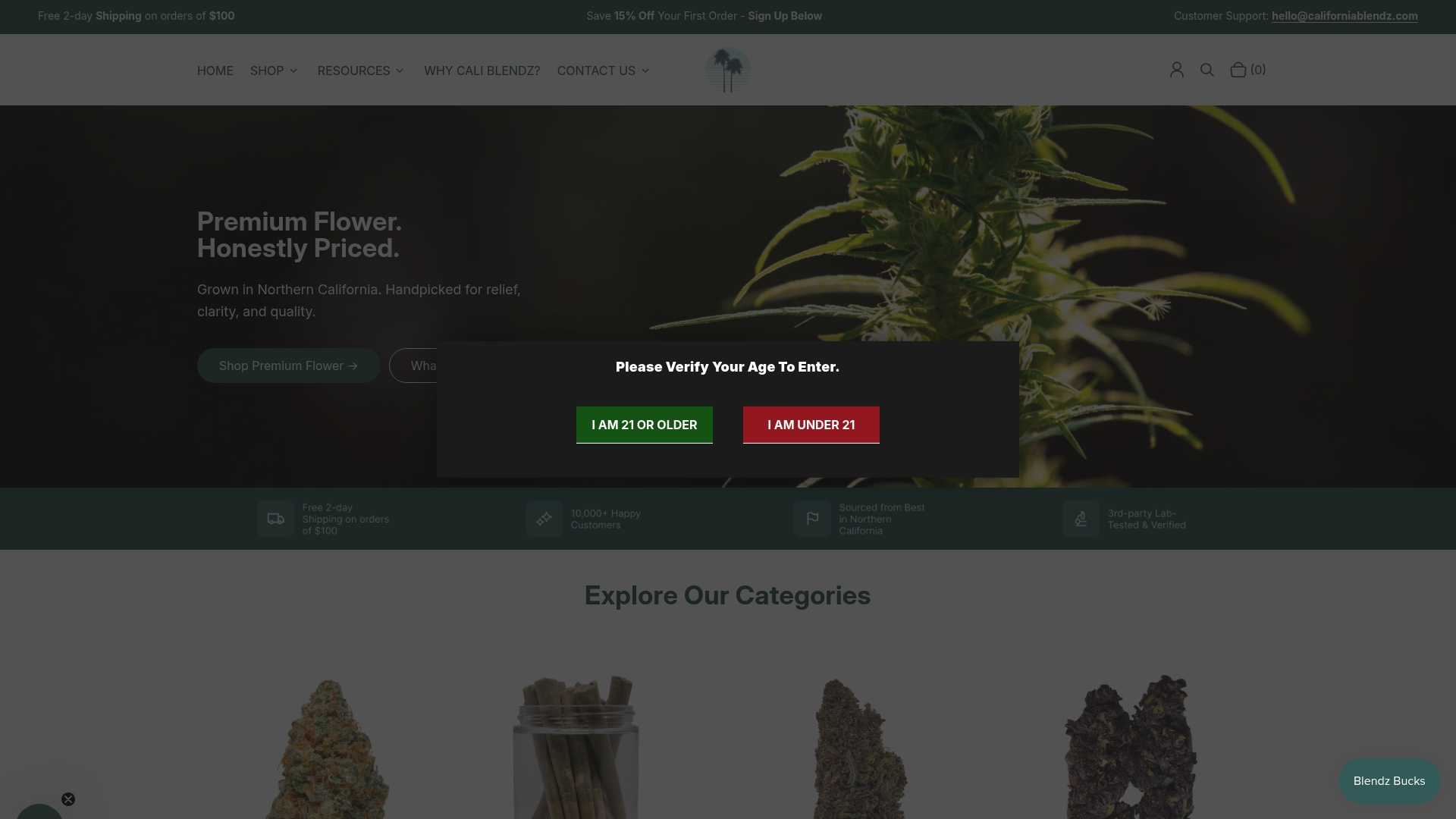Microdosing Cannabinoids: Everything You Need to Know
Written by Trevor

Most people think stronger doses mean better results, but microdosing cannabinoids is changing that mindset. By focusing on doses as low as 2.5 milligrams, more users are experiencing powerful wellness benefits without intense side effects. This approach matters for anyone seeking balance and subtle support rather than overwhelming sensation. Discover how understanding microdosing opens the door to a softer, more personalized way to benefit from cannabinoids.
Table of Contents
- What Is Microdosing Cannabinoids? Core Concepts
- Types of Cannabinoids Used for Microdosing
- How Microdosing Works: Effects and Benefits
- Effective Methods and Dosing Strategies
- Legal Status and Safety Considerations
- Common Mistakes and Best Practices
Key Takeaways
| Point | Details |
|---|---|
| Microdosing Definition | Microdosing cannabinoids involves consuming low doses (2.5-10mg) to achieve wellness benefits without strong psychoactive effects. |
| Types of Cannabinoids | CBD, THC, Delta-8 THC, and others are commonly used for microdosing, each offering unique therapeutic interactions. |
| Effective Strategies | Begin with low doses, monitor responses closely, and adjust gradually for optimal therapeutic outcomes. |
| Legal and Safety Considerations | Ensure compliance with local laws regarding cannabinoid content and consult healthcare professionals before starting any regimen. |
What Is Microdosing Cannabinoids? Core Concepts
Microdosing cannabinoids represents a strategic approach to consuming hemp and cannabis compounds in minimal, precisely controlled quantities designed to unlock therapeutic benefits without overwhelming psychoactive effects. Unlike traditional consumption methods that aim for maximum intensity, microdosing focuses on subtle, incremental interactions with your body’s endocannabinoid system.
At its core, microdosing involves consuming extremely low doses of cannabinoids – typically 2.5 to 10 milligrams per serving – which interact with your body’s receptors to potentially provide nuanced wellness support. According to nanohemptechlabs, this approach emphasizes targeted daily doses to achieve “subtle therapeutic effects” without overwhelming physiological systems.
The practice gains particular intrigue from emerging medical research. A fascinating case report from jmedicalcasereports demonstrated microdosing THC-rich cannabinoid extracts could potentially offer therapeutic benefits for complex conditions like Alzheimer’s, showing improvements in cognitive function without significant side effects. This suggests microdosing isn’t just about recreational moderation, but a potentially sophisticated wellness strategy.
Key characteristics of effective cannabinoid microdosing include:
- Precise, consistent dosing
- Focus on subtle physiological interactions
- Minimal psychoactive experience
- Potential for targeted wellness support
- Personalized approach based on individual biochemistry
Whether you’re exploring microdosing with cannabinoids for balanced wellness, understanding these core principles provides a foundational framework for responsible, intentional cannabinoid consumption.
Types of Cannabinoids Used for Microdosing
Microdosing encompasses a diverse range of cannabinoids, each offering unique potential therapeutic interactions with the human body. The most commonly explored cannabinoids for microdosing include CBD, THC, Delta-8 THC, and emerging alternative cannabinoids that provide targeted wellness support without overwhelming physiological systems.
CBD stands out as a premier microdosing candidate, praised for its non-psychoactive properties. According to nanohemptechlabs, hemp-derived cannabinoids like CBD demonstrate significant potential when consumed in small, controlled doses, highlighting their safety profile and nuanced therapeutic benefits. This approach allows users to experience subtle physiological support without intoxicating effects.

THC microdosing presents another fascinating therapeutic avenue. A compelling case report from jmedicalcasereports demonstrated remarkable potential by using THC-rich cannabinoid extracts in minimal doses to address complex neurological conditions like Alzheimer’s. This research suggests microdosing THC could offer cognitive improvements with minimal side effects.
Key cannabinoids frequently used in microdosing include:
- CBD: Non-psychoactive, stress-reduction
- Delta-9 THC: Potential pain management, mood regulation
- Delta-8 THC: Milder psychoactive effects, anxiety support
- CBG: Anti-inflammatory properties
- CBC: Potential neuroprotective benefits
For those interested in exploring the world of alternate cannabinoids, understanding these nuanced compounds provides a comprehensive framework for intentional, wellness-focused consumption.
How Microdosing Works: Effects and Benefits
Microdosing operates through a sophisticated interaction with the body’s endocannabinoid system, delivering subtle yet potentially transformative therapeutic effects. Unlike traditional consumption methods that overwhelm physiological systems, microdosing introduces cannabinoids in minimal quantities that trigger nuanced cellular responses without producing intense psychoactive experiences.
According to nanohemptechlabs, hemp cannabinoid microdosing may offer remarkable benefits like reduced anxiety, improved sleep quality, and enhanced overall wellness. The key lies in precise, targeted dosing that allows the body to integrate cannabinoids gradually, promoting a balanced physiological response without overwhelming neural receptors.
Medical research provides compelling evidence of microdosing’s potential. A groundbreaking case report from jmedicalcasereports demonstrated significant cognitive improvements in an Alzheimer’s patient through carefully administered THC-rich cannabinoid extracts, suggesting microdosing could offer neurological support with minimal side effects.
Potential benefits of cannabinoid microdosing include:

- Stress and anxiety reduction
- Improved sleep patterns
- Enhanced cognitive function
- Subtle mood stabilization
- Potential neuroprotective effects
- Minimal psychoactive interference
For those seeking a deeper understanding of precise cannabis consumption, our guide to microdosing cannabis flower provides additional insights into achieving balanced, intentional wellness through strategic cannabinoid use.
Effective Methods and Dosing Strategies
Microdosing cannabinoids requires a strategic, methodical approach that prioritizes individual biochemistry and precise measurement. The fundamental principle is finding the minimal effective dose that provides therapeutic benefits without overwhelming the body’s endocannabinoid system, which demands careful, personalized experimentation and keen self-observation.
According to nanohemptechlabs, successful hemp cannabinoid microdosing hinges on starting with extremely low doses and gradually adjusting. The recommended approach involves beginning with 2.5 to 5 milligrams per serving, carefully monitoring physiological responses, and incrementally increasing dosage only after understanding individual tolerance and sensitivity.
Medical research provides compelling insights into effective dosing strategies. A notable case report from jmedicalcasereports demonstrated the potential of carefully administered THC-rich extracts in microdoses, highlighting the importance of precision and individual variability in achieving therapeutic outcomes.
Effective microdosing strategies include:
- Start with the lowest possible dose (2.5-5mg)
- Use precise measuring tools
- Maintain a consistent dosing schedule
- Track and document personal responses
- Adjust incrementally based on individual experience
- Consider time of day and personal biochemistry
Those seeking more nuanced guidance can explore our comprehensive guide about CBD and cannabis dosage, which provides additional insights into navigating cannabinoid consumption with confidence and care.
Legal Status and Safety Considerations
Cannabinoid microdosing exists in a complex legal landscape that requires careful navigation and understanding of federal and state regulations. The legal status of cannabinoids varies significantly depending on the specific compound, its source, and the concentration of psychoactive components like THC, making it crucial for consumers to stay informed and compliant.
According to nanohemptechlabs, hemp-derived cannabinoid products containing less than 0.3% THC are federally legal in the United States. This means CBD and other hemp-extracted cannabinoids can be legally purchased and consumed, provided they meet specific regulatory requirements. However, individual state laws can differ dramatically, necessitating thorough research into local regulations before purchasing or consuming any cannabinoid products.
Safety remains a paramount concern in cannabinoid microdosing. While research suggests minimal side effects at low doses, individual reactions can vary widely. Potential considerations include interactions with existing medications, individual biochemistry, and pre-existing health conditions. It’s always recommended to consult with a healthcare professional before beginning any new supplement regimen, especially for individuals with complex medical histories or those taking prescription medications.
Key safety and legal considerations include:
- Verify THC content (must be < 0.3% for federal legality)
- Check state and local regulations
- Consult healthcare professionals
- Start with low doses
- Purchase from reputable, lab-tested sources
- Monitor personal physiological responses
- Be aware of potential medication interactions
For those seeking additional insights into navigating the complex world of cannabis regulations, our comprehensive guide about cannabis dosage provides valuable context and practical advice for responsible consumption.
Common Mistakes and Best Practices
Cannabinoid microdosing requires a nuanced approach that balances precision, self-awareness, and scientific understanding. Many enthusiasts unknowingly sabotage their microdosing experience by making critical errors that can diminish potential therapeutic benefits or create unnecessary risks.
According to nanohemptechlabs, one of the most prevalent mistakes in hemp cannabinoid microdosing is inconsistent dosing and neglecting product quality. Practitioners should prioritize using third-party tested products and maintaining a detailed dosing journal to track personal responses, physiological changes, and overall effectiveness of their microdosing protocol.
Medical research underscores the importance of individualized approaches. A compelling case report from jmedicalcasereports highlighted that careful dosing and consistent monitoring are paramount in achieving therapeutic success, particularly when working with cannabinoid extracts that can produce variable physiological responses.
Common mistakes to avoid in cannabinoid microdosing:
- Inconsistent dosing schedules
- Purchasing unverified, untested products
- Ignoring individual biochemical differences
- Failing to track and document personal responses
- Expecting immediate or uniform results
- Overlooking potential medication interactions
For those seeking deeper insights into responsible cannabinoid consumption, our comprehensive guide about cannabis dosage offers valuable strategies for navigating microdosing with confidence and care.
Discover the Power of Microdosing with Premium Cannabis Products
Struggling to find the perfect balance for your wellness routine Microdosing cannabinoids offers a gentle, effective way to experience the benefits of hemp-derived compounds without overwhelming effects. Whether you seek subtle relief from stress or a calm clear-headed boost California Blendz provides high-quality solutions tailored for this intentional approach. Our selection of CBD Sativa-dominant products is ideal for those who want precise microdosing options that support relaxation and focus.

Take control of your wellness journey now with lab-tested organic flower and expertly curated bundles like our THCa Bundle – California Blendz for enhanced therapeutic effects. Visit California Blendz today to explore these natural, transparent options designed for your unique body chemistry and legal compliance. Start microdosing mindfully and feel the subtle shift toward balance.
Frequently Asked Questions
What is microdosing cannabinoids?
Microdosing cannabinoids involves consuming small, precisely controlled doses of hemp and cannabis compounds, typically between 2.5 to 10 milligrams, to unlock therapeutic benefits without overwhelming psychoactive effects.
What are the benefits of microdosing cannabinoids?
Microdosing cannabinoids may offer several benefits, including reduced anxiety, improved sleep quality, enhanced cognitive function, subtle mood stabilization, and potential neuroprotective effects, all while minimizing intense psychoactive experiences.
How do I determine the right microdose for me?
To find the right microdose, start with the lowest possible dose (around 2.5 to 5 mg) and gradually adjust based on your individual physiological responses and sensitivities. Keeping a dosing journal can help track your experiences and effectiveness.
Is microdosing with THC safe?
Microdosing with THC is generally considered safe at low doses, but individual reactions can vary. It’s essential to consult with a healthcare professional, especially if you have pre-existing medical conditions or are taking other medications.








